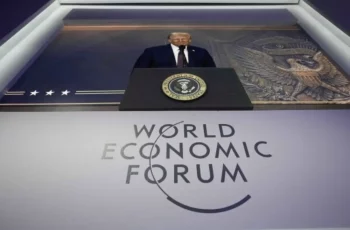
The energy transition and the development of new energy technologies are fundamentally reshaping the energy mix. Increased production of green hydrogen, decarbonization of the transport sector and power supply for electric vehicle batteries and hydrogen fuel cells will require clean energy sources. RES (Renewable Energy Solutions), including solar and wind power, among others, may not fully support this transition due to intermittency issues and low-capacity utilization rates, so nuclear power may become another potential source of clean energy.
Licensing reactor designs can be an important issue. Developing countries generally lack the necessary expertise to do this, so they have to rely on licensing from nations such as the United Kingdom, the United States, France, Russia and China.
One of the key problems faced by countries of the Global South when planning NPP construction is a lack of funding due to limited state budgets or private resources. Under these circumstances, they are compelled to seek external financing, but securing it is quite difficult when sovereign credit ratings are low or there are difficulties in accessing funds from national and international financial institutions.
While the path to financing nuclear power in emerging economies is challenging, the potential benefits promise significant outcomes, including addressing the issue of balancing the energy mix dominated by RES. With effective investment mechanisms, nuclear power can play a critical role in meeting growing energy needs and achieving low-carbon development goals.
In 2023, there were 413 operational nuclear reactors worldwide, with a total installed capacity of 372 GW. Most of them were concentrated in North America, Europe and developed Asian nations. In the Global South (eight countries), there were 91 reactors in operation (22% of the total number in the world), with an installed capacity of 73 GW. The current contribution of countries in the Global South to the world’s nuclear power generation is relatively modest. But things look very different when we consider the number of reactors under construction, which stands at 41 (or around 70% of all units under construction globally) in countries of the Global South. The number of countries in the region with NPPs is also rising (up to 10). China and India are the region’s leaders in nuclear power and are set to stay at the top through 2050.
According to most forecasts, the growth of the total installed capacity of NPPs worldwide will reach an average of 800 GW by 2050, which is almost twice the total installed capacity of NPPs in 2023. However, the range of these forecasts varies significantly depending on the scenario under consideration. The uncertainty in the estimates of growth prospects for nuclear power arises from many factors. Unlike wind, solar and battery power, which play a key role in achieving ambitious climate goals and have become increasingly affordable over the past decades, the execution of NPP construction projects is frequently plagued by budget overruns and delays. This trend is particularly evident in projections of nuclear power development across the Global South.
The analysis of the global energy development forecasts suggests that electricity generation at NPPs is expected to rise by 2.4 – 3.2 times in developing Asian countries, primarily driven by China and India, by 2.5 – 3.7 times in Africa and by 4.4 – 7.7 times in the Middle East.
The global push for nuclear power development offers additional opportunities for Russian company Rosatom to expand its activities in this market. In recent years, Rosatom has become a leader in providing nuclear power technologies to countries of the Global South, steadily expanding its presence in Latin America, the Middle East, Africa and Asia. This strategy is backed by significant state support and makes it possible to find new partners and offer a wide range of nuclear technologies. Rosatom stands out as the only company in the world capable of providing all elements necessary for creating comprehensive national programs for nuclear power development. The state nuclear corporation has repeatedly won bids for reactor construction, positioning itself as a leader in the number of simultaneously executed nuclear reactor construction projects. The company also controls around 20% of the global market for enriched materials for NPP fuel supply. Important forms of promoting Russian nuclear technologies in the energy markets of the Global South include the participation of Russian entities in international organizations such as the IAEA. New platforms for international cooperation include BRICS and BRICS+ formats – in particular, the establishment of a nuclear platform within the group. Russia traditionally holds a strong position in training personnel for the nuclear power sector in the region.
The development and introduction of new types of nuclear reactors, including floating NPPs and SMRs – projects that Russia is actively working on – represent promising technological solutions for countries of the Global South. This opens up extra opportunities for Rosatom, as the company can offer cutting-edge equipment to its partners in the foreseeable future and has leading expertise in producing more enriched fuel required for such plants. The shift of leadership in nuclear power development from the Global North to the Global South is a natural process of transformation in global energy markets in the years to come, presenting new opportunities for Russia, which possesses the necessary technologies.










Comments